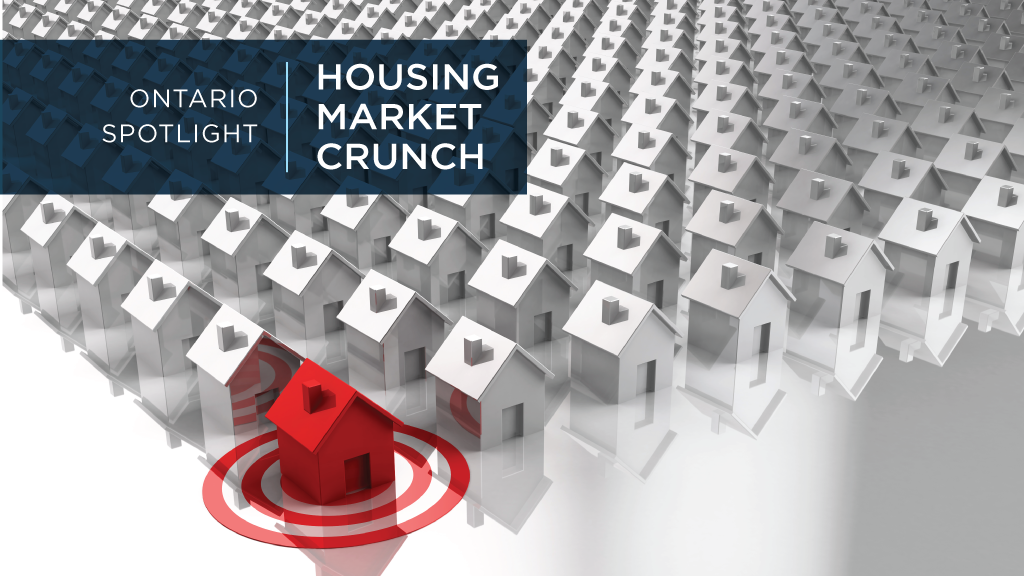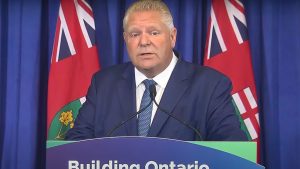Judging by the current state of affairs in the residential construction industry, it would be a Herculean feat for Ontario to reach its targets of building 1.5-million new housing units by 2031.
High interest rates, labour and material costs, excessive bureaucracy and red tape, along with hefty taxes, fees and levies have created a perfect storm of problems for new homebuilders.
Since 2021, roughly 286,000 units have been built in Ontario.
To reach the target, another 1.2 million must be built in the next eight years, or 151,750 a year — nearly double what is being built now.
Private sector projections indicate Ontario is on pace for no more than 83,000 starts in any year until 2026.
All signs point to some tough years ahead for the housing market in Ontario. How bad could it get?
Mike Moffatt, senior director of policy and innovation at the , says it doesn’t look promising.
While it’s theoretically possible to reach the provincial government’s housing target of 1.5-million new units over a 10-year period, it’s looking doubtful as governments can’t agree on policy, he says.
“We did the math and, with the recent population growth, we’re forecasting that Ontario needs to actually build 1.7 million homes. That would be incredibly challenging. If we had all orders of government aligned and going bold on this, I think we could do it. But we’ve got the federal government and the province and municipalities arguing over fourplexes. There’s a real lack of vision.”
“There’s a lot of families who are on the sidelines”
Moffatt says more development land is also needed, which would mean expanding urban growth boundaries, but the process has become politicized and there is a lack of systems in place for that to happen.
“It’s not looking good for our ability to hit these targets.”
Rapid population growth, red tape and excessive taxes are other contributing factors that are making it difficult to build housing in Ontario, says Moffatt.
Development charges have increased 800 per cent in the last 20 years and the cost of land is up approximately 900 per cent.
“I definitely don’t earn 800-per-cent more than 20 years ago,” he says.
There’s a lot of families who are on the sidelines and have been there for several years now, says Moffatt.
“When interest rates were low, they were priced out because home prices were so high. Now we have had easing with some market prices down 20 per cent since the peak of the pandemic, but nobody can qualify for a mortgage anymore.
“People are more hopeful that if interest rates go back down that will ease conditions. But without extra supply, I think we’ll see prices shoot back up again. It’s a lot of people chasing a limited number of units.”
Last year was a painful year for housing
Eddie Sheppard, vice-president, insights at , noted in a recent blog that 55 per cent of Canadians expect housing prices to continue to rise, and only 25 per cent are optimistic about an improvement in housing availability.
Alarmingly, 75 per cent of survey respondents to a recent survey indicated accessibility will either remain stagnant or further deteriorate.
A spring Housing Supply Report released recently by CMHC, meanwhile, noted that Toronto is lagging behind other major Canadian cities. Starts of ground-oriented housing types declined in 2023, similar to what happened in other urban centres. In Ottawa, total housing starts in 2023 declined by 20 per cent.
BuildForce şÚÁĎłÔąĎÍř indicates in its latest outlook report that the residential construction sector in Ontario will experience a rough couple of years before it returns to growth between 2025 and 2028.
To fix the crisis, industry stakeholders and organizations are increasingly calling for greater co-operation between governments.
Marc Desormeaux and Florence Jean-Jacobs, principal economists at Desjardins, argued in a perspective on the issue that all levels of government must stop passing the buck and work together to make sure the homebuilding industry has the labour and capital it needs to thrive.
“şÚÁĎłÔąĎÍř’s status as a welcoming, affordable, clean and prosperous place depends on it,” they wrote.
The has suggested all three levels of government must step up their efforts and work in unison to tackle the housing problem.
“Last year was a painful year for housing construction and, at the rate we are going, we’re not even close to fixing the crisis,” says Richard Lyall, president of the organization. “Ridiculous red tape, along with excessive fees, taxes, levies, development charges and bureaucracy are choking housing supply and pushing home ownership out of the reach of many.”
Because of hefty tax and development charge hikes builders can no longer build housing for the middle class, he says.
“A downpayment today is basically the increase in development charges and the HST in the last 15 to 20 years. Does that make any sense? There’s a whole bunch of disconnects here and it really needs to be brought together better.”
The clock is ticking, notes Lyall.
“We need to do this yesterday.”












Recent Comments
comments for this post are closed